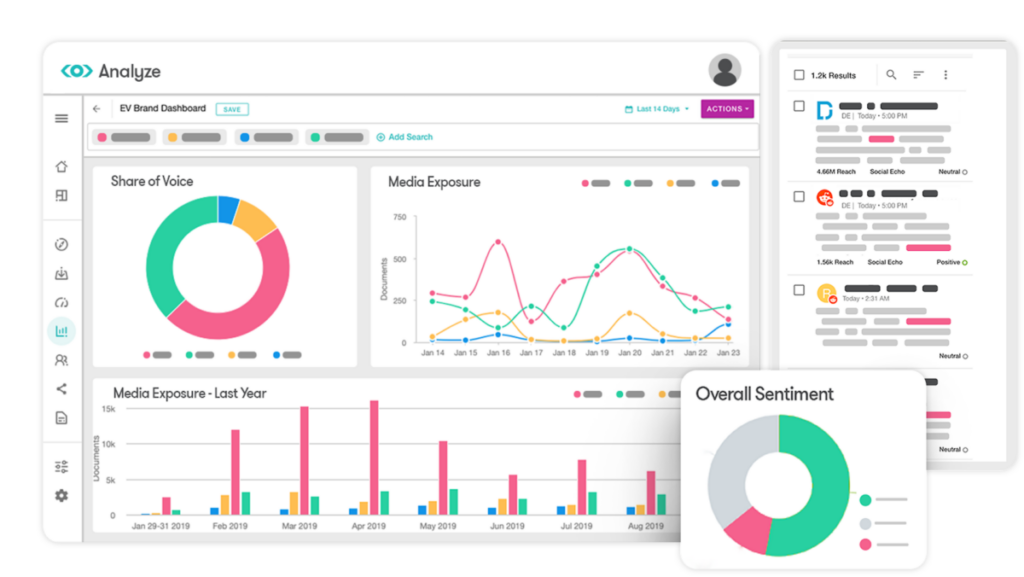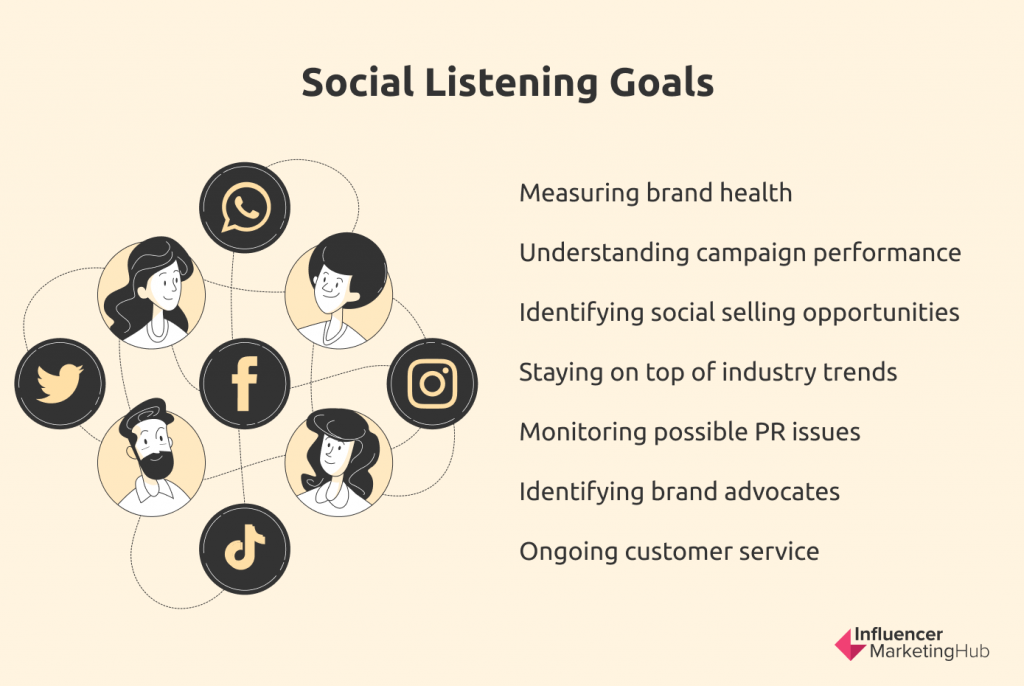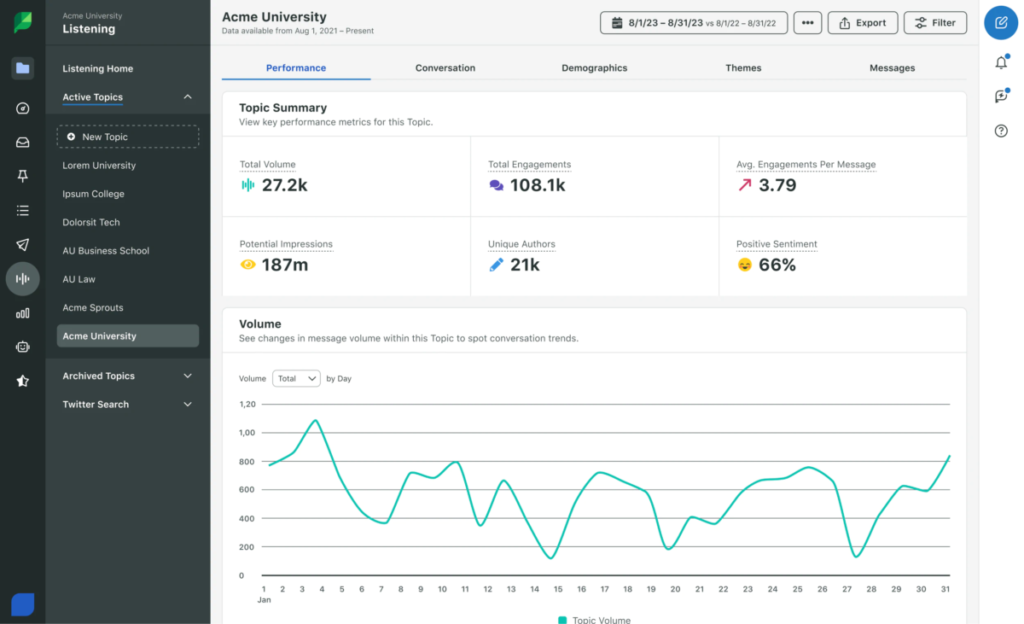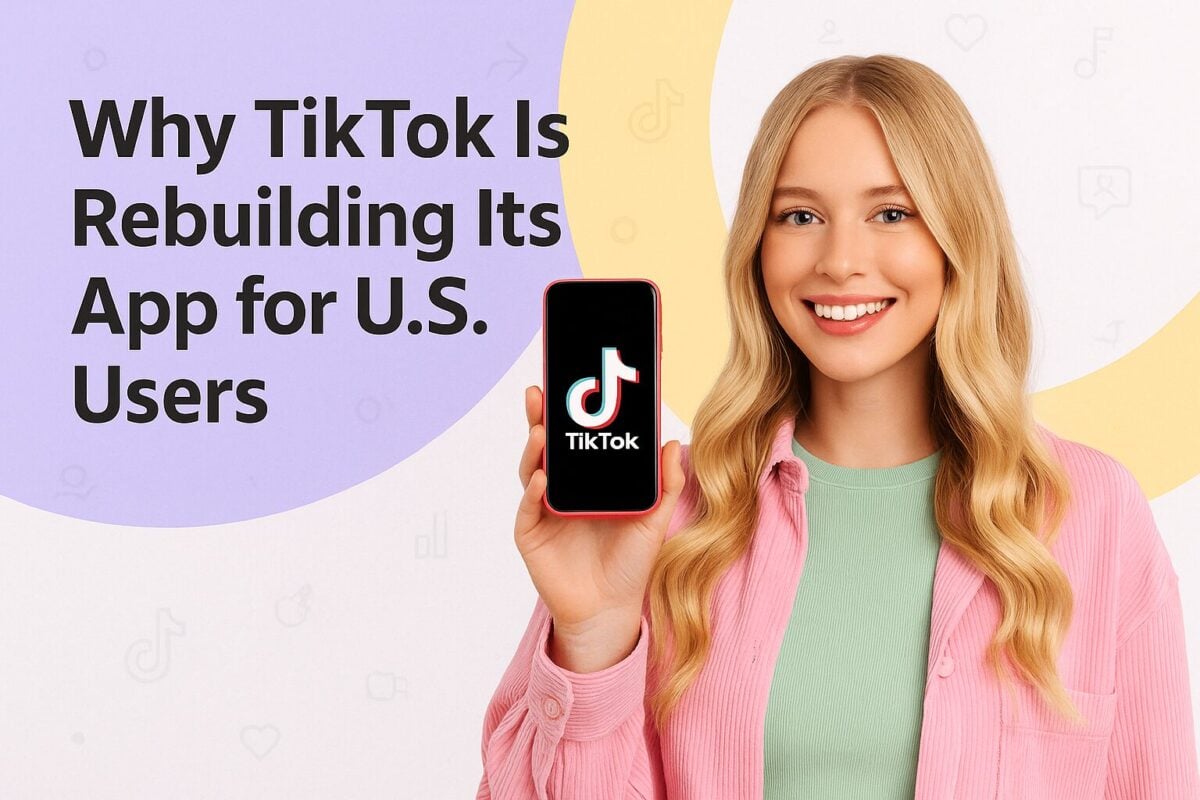Ever wish you could read the minds of your customers? How do they feel about you? What do they want from you? Do they have needs that are unmet? These are questions you may often ask yourself. And social listening could help you uncover the answers you need.
So what is social listening exactly and how exactly does it help your business? More importantly, how can you get started with social listening? Read on to find out.
What Is Social Listening?
As the name suggests, social listening is the process of “listening” in on conversations that are happening on social media. This means monitoring and analyzing conversations around your brand and other relevant topics. So it’s a great way to get into the minds of your customers, understand how they feel about your brand or a certain topic, discover their interests and pain points, and identify optimization opportunities.
With the right approach, social listening can inform various aspects of your business – from your marketing strategy to your messaging to your customer service. Keep in mind that social listening is different from social media monitoring. While social media monitoring answers the what questions, listening goes a bit more in-depth to answer the why questions. In other words, listening also analyzes the data that you collected from your social media monitoring efforts.
How Social Listening Can Benefit Your Business
There are plenty of reasons to use social listening with both direct and indirect benefits to your business. Some of the main ways you can use social listening include:
Engaging with Your Audience
One of the most popular uses of social listening is for monitoring conversations. And this helps you find plenty of opportunities to engage with your audience. These may be conversations that you can participate in. Or it could be brand mentions where you can directly provide an answer or solution. By finding and leveraging these opportunities, you can show your audience that you’re willing and eager to communicate with them.
In the following example, HubSpot decided to thank someone who’s raving about the brand’s content marketing. This may seem like a simple reply but it shows people that the brand appreciates their positive feedback.
Thank you for the awesome shoutout! Providing value to help professionals grow better is exactly what fuels us ?
— HubSpot (@HubSpot) February 8, 2022
Understanding Your Audience
Listening in on social media conversations effectively helps you to understand who your audience is. It gives you an idea of the topics they’re talking about and the attitude they have toward those topics. This helps you go beyond demographic data to dive deeper into their interests, values, and needs.
Identifying Opportunities to Sell
Social listening can be used to find conversations by people who are likely to be interested in your products or services, making it vital for your social selling strategy. For example, someone might ask their followers about their experience using your products. Or they might be asking for recommendations relevant to your products or services. These are excellent opportunities to engage with potential leads and nurture them into paying customers.
Here’s an excellent example from Black Girl Sunscreen. The sunscreen brand introduced themselves to someone who’s in search of recommendations for black girl-friendly sunscreen.
Heeeey ?? pic.twitter.com/v2hxZfIliX
— Black Girl Sunscreen (@BlkGrlSunscreen) February 1, 2022
Staying on Top of the Latest Trends
Social listening helps you stay on top of the latest trends that are influencing the market. You can analyze discussions and hashtags related to your industry to pick up on new or upcoming trends. This will help you to get a feel of where the market is headed so you can adapt your strategies and messaging accordingly.
Improving Brand Health
With the ability to analyze sentiment, social listening is also extremely useful for understanding how people feel about your brand or your products. And by diving into the specifics of what influences this perception, you can identify the problems that need to be fixed or the sentiment that needs to be nurtured. This will then help you to develop practical action plans to improve brand health.
In some cases, you may even find trending conversations in which your brand is getting some positive media attention. Capitalize on these opportunities by engaging with your audience and being a part of the conversation. This is a great way to improve and maintain brand health even when sentiments are already on the positive side.
When Lay’s launched an ad for the 2022 Super Bowl, the brand received a lot of praise from the public. Social platforms were teeming with comments about the ad. Naturally, Lay’s capitalized on the moment by participating in the conversation.
Paul Rudd and Seth Rogen Take a Hilarious Walk Down Memory Lane in Lay's #SuperBowl Commercial https://t.co/U2UW1Zqw8Q
— People (@people) February 14, 2022
Resolving/Mitigating PR Disasters
Social listening is a great way to instantly spot issues that could potentially become a PR disaster. You can actively look out for negative conversations or reactions toward your ads, social media posts, products, and services. This gives you the opportunity to quickly respond and resolve the issue before it escalates.
Discovering Brand Advocates
One of the most underrated uses of social listening is for identifying brand advocates. Your social listening efforts could help you uncover people who are leading conversations about your brand. Whether they’re influential personalities or even just regular social media users, people who already love your products would make excellent advocates. Consider activating them in your brand advocacy program and/or regularly interacting with them to nurture their loyalty.
Providing Exceptional Customer Service
Complaints, questions, and issues are easily discovered using social listening. This allows you to quickly respond to your customers and provide them with the help they need. And the best part is that it lets you go beyond customers who directly message you on social media. You could set up alerts for tagged and untagged brand mentions so you’re immediately notified when someone talks about your brand online. You can then look for service-related issues that need immediate response.
How to Get Started with Social Listening
Getting started with social listening may seem as simple as picking a tool to use and just winging it. But this can only get you so far and will often leave you with an overwhelming amount of data that you can’t really use. So it’s important to have a clear sense of direction with your social listening efforts. Here are the steps that you need to take to get started:
1. Define Your Goals
Start with a definite idea ofwhyyou need a social listening campaign. What do you plan to achieve with your listening efforts? Do you want to understand people’s perception of your brand? Do you want to monitor how people are responding to a new product or campaign? Or perhaps you want to use it as an ongoing effort to enhance the customer experience. Whatever goal it is you want to achieve through social listening, make sure it’s clearly defined so you know what you’re working toward.
Otherwise, your efforts will be all over the place and you won’t know how to make sense of all the conversational data that’s coming in. A goal will help you understand what you’re listening for, which conversations are important, and which conversations you should filter out. This will allow you to streamline your listening efforts so you can extract valuable and practical insights for your business.
2. Determine Your Data Sources
To start analyzing social media conversations, you need to think of where to get those conversations. Each social media platform has its own benefit and its own set of user base. So it’s important to carefully determine which ones are most important to your brand and then focus on those.
Although you may want to listen in on conversations from all available social networks, this will leave you with more data than you can analyze. That means most of the data will be data you don’t need. So to improve the efficiency of your listening efforts, make sure you first decide on the most important data sources to focus on.
You can then look for a social listening tool that’s capable of pulling data from your target sources. Twitter is always a good place to start due to the significant amount of conversations that take place on the platform. Additionally, you can choose to focus on other prominent networks like Facebook and Instagram depending on your goals and where your target audience is.
3. Choose the Right Social Listening Tool
Next, it’s time to choose which tool you’ll be using to conduct your social listening. This is one of the most critical steps because there are many factors that need to be considered and plenty of social listening tools to choose from. Besides budget, you have to think about usage and whether the features can effectively support your needs. In addition, you have to consider whether the tool is capable of crawling your desired data sources.
For example, some high-end tools like Sprout Social offer a comprehensive suite of social media management tools including listening tools. But they’re often on the expensive side and may be more suitable for large corporations and agencies.
On the other hand, you can also find budget-friendly solutions like Mention that offer essential social listening capabilities. Additionally, you can even find tools with image recognition capabilities – features such as YouScan, which are ideal if you want to go beyond text conversations to analyze visual content.
So with all these different options available, it can be overwhelming to choose the best social listening tool for your brand. Use your goal to guide your decision and find a tool that can best help you achieve it.
4. Build Topics and Themes
Now that everything’s laid out, you can start building your listening topics. This involves determining what to listen for such as hashtags, keywords, phrases, brand mentions, etc. You can then use these topics and themes to create queries that will help you pull the data you need.
For example, let’s say you want to measure people’s sentiment around vegan ice cream. In this case, you may end up with several queries to use in your search such as:
- Vegan ice cream
- Vegan gelato
- Vegan frozen dessert
- Dairy-free ice cream
- Dairy-free gelato
Depending on the listening tool you’re using, you can get really specific with your query by adding more parameters. Some tools will even let you exclude certain words of phrases from your search so you only get the most accurate results.
5. Start Collecting Your Data
Next, you can begin to collect data using your social listening tool. This will typically involve entering the queries based on the topics and themes you’ve built. Alternatively, you may choose to only listen in on your brand name or your product name depending on your goal. This will help you measure listening metrics such as share of voice and brand sentiment.
At this stage of the listening process, you really need to key in on the metrics that are relevant to your goals. For example, measuring brand health may require looking at sentiment metrics. Or if you want to see how people are responding to your latest campaign, you may want to look at metrics like media exposure, sentiment, and share of voice.

Source: meltwater.com
6. Turn Data into Insights to Inform Strategies
One of the most important steps in the social listening process is turning the data into insights that you can use in your strategies. This is, perhaps, one of the areas in which most businesses struggle. It involves understanding what the data means and how it’s relevant for your business in that moment.
For example, let’s say you’re monitoring conversations about a newly-launched product and the sentiment is mostly negative. And if you look deeper into the conversations, you’re seeing lots of complaints about how a particular feature isn’t working as it should. So you can get the insight that this feature needs to be improved on. Additionally, you’ll also need to think about how to resolve the issue that people are already experiencing.
This way, you can break down the data to get valuable insights that can inform your strategies. To get a better idea of what the data means, you can even put it into context by looking at it next to your analytics data.
Start Listening for Growth
With the right approach and the right tools, social listening can benefit multiple aspects of your business – from your sales and customer service to your research and development. Make the most of the tips highlighted above to get started with social listening so you can use it for your business growth.
Frequently Asked Questions
What is social listening example?
An example of social listening is finding conversations where people are expressing a pain point and then determining how you can address that pain point through your products or services.
What is a social listening tool?
A social listening tool crawls data from multiple social media platforms and then analyzes them to provide valuable insights.
What is a social listening strategy?
A social listening strategy involves setting up goals on what to listen for and then taking a strategic approach to monitor and analyze social media conversations based on those goals.
What are the three benefits of social listening?
Social listening helps you discover opportunities to engage with your audience, sell to prospective customers, and fix potential PR issues before they escalate.
What’s the difference between social listening and social monitoring?
Social listening is the process of monitoring and analyzing social media conversations, whereas social monitoring is only a part of social listening and doesn’t involve analyzing the data.





